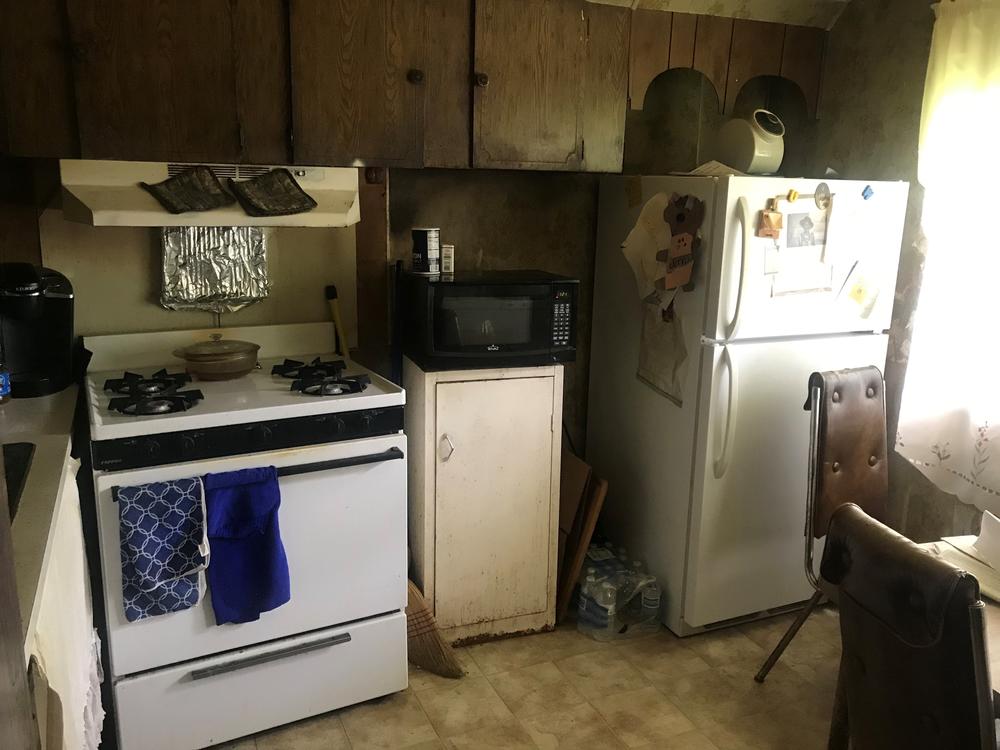Section Branding
Header Content
High Energy Burdens Keep Low Income Georgians From Benefits Of Solar Power
Primary Content
Barbara C. lives in a modest, one-story, three-bedroom home in Washington, Georgia. She’s 73 years old and has lived there since 1977 when she had the house built.
It’s sits on a plot of land across from a cemetery, separated by a tree covered chain link fence. The house is decorated with older, worn furniture. And inside those walls, she’s raised her two kids and sometimes her four grandkids.
Barbara is retired and on a fixed income, but she has a pretty big problem.
“Sometimes my utility bill be half of my income coming in on the 30th,” she said sifting through months of utility bills, pondering why they’re so high. But she simply doesn’t know.
The Burden of Energy
Barbara gets about $1,000 a month in social security. Her utility bill due in June was $383, a combination of current and past due charges, with 4o percent of that bill being electricity charges.
Squinting at the bill, Barbara lifted her glasses from around her neck to get a better look at the charges.
“I paid that $188,” she said, referring to the past due charges from her bill in May. “I paid this one; this one I have to pay next month.
Those are on the cheap end. Last November one of her bills topped out at $890, once again a combination of current and past due charges. About 70 percent of those charges were for electricity.
The U.S. Department of Health and Human Services defines an energy burden above 6% as unaffordable. That’s the amount of your income you spend paying your utility bill.
The average burden for low income families in Atlanta and rural parts of the state hovers around 10%.
Atlanta has some of the highest energy burdens in the country. For Barbara, who lives out in Washington, Georgia, hers ranges from 17 to 36%, and that’s before late fees.
Going Solar
Georgia produces enough solar energy to power more than 180,000 homes, according to the Solar Energy Industries Association. In fact, the sun powered source accounts for about 2% of the state’s electricity.
Barbara could pay extra on her bill for solar power, but it’s something she hasn’t even thought about.
“The reason I haven’t thought about it is because I know I couldn’t afford it,” Barbara said, staring out her living room window into here sun filled yard.
The same with installing her own panels.
RELATED: Does Residential Solar Pay Off?
“I’m on a budget, a set income,” she said. “But when the emergency things come up, I have to try to handle it the best way. I need my car to go back and forward to keep my doctor appointments. I have to take care other things and pay other bills.”
Rich Simmons, with the Strategic Energy Institute at Georgia Tech, said the cost to get started is just too high for low income communities.
“Not that they can’t justify sort of what we call the payback or return on investment, the problem is the initial cash outlay is the big barrier,” Simmons said.
The price of installing solar power in Georgia has gone down by about 33% since 2014. And there are federal income tax credits for installing your own solar, but you’re still looking at spending some $15,000 up front for a relatively small unit.
It also takes about a decade for the investment to pay off.
The free capital needed to get the ball rolling make it almost unreasonable for low income communities to use solar power as an option to lower their bills.
Energy Efficiency
In fact, Chandra Farley with the Partnership for Southern Equity said that probably shouldn’t be the first choice.
“Before you would even recommend someone in a home owned rooftop situation put solar on their homes, you have to make sure that they are first as energy efficient as possible,” Farley said.
That’s a problem Simmons with Georgia Tech said is common among older homes.
“We think there’s quite a bit of wasted energy by virtue of the fact that these homes are less efficient,” he said. “Not only do the homes have maybe lower quality windows and attic insulation construction materials, but the appliances that are used in the homes are often low cost and therefore lower efficiency as they age.”
That’s true for Barbara. She’s had her washing machine for 15 years and her stove for 19. She was forced to buy a new dryer two months ago, only after her old one gave out. And this one has an energy preferred setting.
It’s also been a challenge improving her home’s weatherization. Georgia’s Environmental Finance Authority works with community action agencies to provide that service to low income households. They do energy audits on your home before coming up with the necessary steps to take.
Last year, only 458 homes were helped through the state-run program, which receives between $5 to $9 million from the U.S. Department of Energy and the Health and Human Services. Looking at income alone, about one million households could have applied if they needed to.
Barbara said she’s applied before but never found a good time for someone to come to her home.
At this point, she said she would try just about anything to lower her bills. Even it meant pooling her money with her neighbors for community solar.
“Yes, I’d be willing,” Barbara said. “But my check can’t be pulled but so much.”
Her utility bill that was due on the third of this month, ran higher than $400, with more than half of that going toward electricity.



